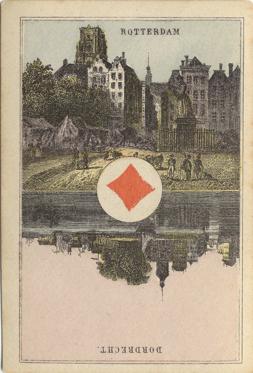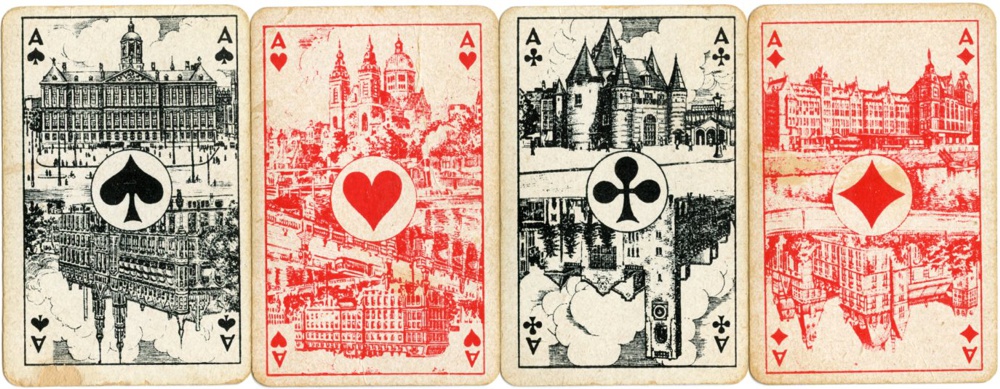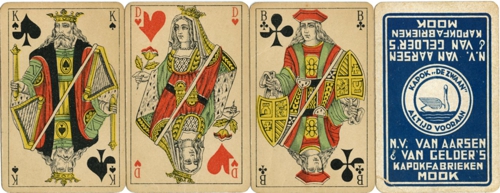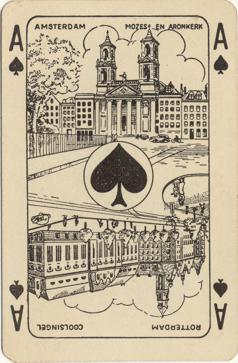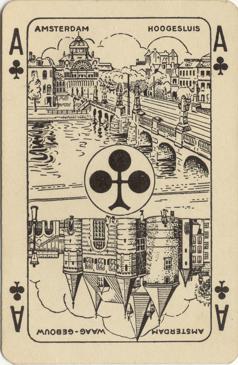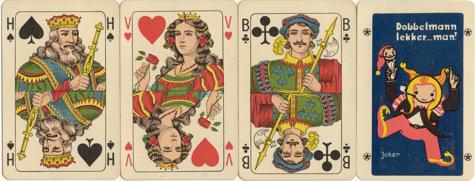|
These
two decks were also made by Mesmaekers from Turnhout and published in the Netherlands in the
1940's. In the first deck (52+j) this set of scenic aces was accompanied by
courts of which the Queens especially show an elaborate, Art Deco influenced,
design. The same set of aces was also used by Mesmaekers in a 32 cards "piquet" deck, Nr. 1403B, that was accompanied by an
almost exact copy of the Rhineland pattern by Dondorf. This set of aces has also
been printed in black and white for other decks. There's an interesting
depiction of the Royal Palace on the Ace of Spades. It's the only ace in our
collection that shows the front of the palace and not the side facing the Dam
square, which is usually depicted, but is actually the backside of the palace.
The main entrance is on the left side, straight under the Atlas figure on top.
The palace was originally built between 1648 and 1665 as a city hall, facing a
canal on the west side of the center. In 1808 the building was appointed to
become the palace of the French king Louis Napoleon. He fancied the idea of a broad view on a large square, where large crowds
could gather and for this purpose the weighing-house, situated on the square at
the back of the palace was demolished that same year. Since then that square,
the Dam, became the central point in Amsterdam and the view of the backside of
the palace and this square can be found in almost every set of scenic aces. |

|




